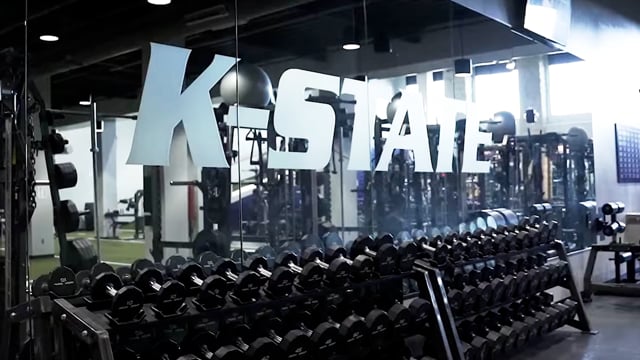Understanding Velocity Ranges and Zones

In the realm of strength and conditioning, the quest to optimize training methodologies for enhanced performance and muscle growth is a never-ending journey. Velocity based training or VBT is an innovative method that shifts the focus from traditional percentage-based training to utilizing the velocity of the barbell or resistance to guide training intensity and programming. Understanding the concept of velocity ranges, their variance, and the appropriate application for different exercises can be a game-changer for athletes and coaches alike.
The Essence of Velocity-Based Training
Velocity-Based Training centers around the idea that the speed at which a weight is lifted can provide insights into the individual's readiness, strength levels, and fatigue. By quantifying barbell velocity, athletes and coaches can fine-tune training programs to target specific goals effectively. Instead of relying solely on arbitrary percentages of one-rep max (1RM), VBT introduces the concept of velocity ranges or zones that correlate with different training outcomes.
Exploring Velocity Zones
Existing research indicates that there are 5 main velocity zones - this is an excellent starting point and introduction to velocity based training. These zones are largely based on research from Dr. Bryan Mann, Dr. Dan Baker, Dr. Jonathan Weakley, Dr. Tim Suchomel, Dr. Juan Jose González-Badillo and a few more. The zones are:
- Zone 1: Absolute Strength = < 0.5 m/s
- Zone 2: Accelerative Strength = 0.5 - 0.75 m/s
- Zone 3: Strength-Speed = 0.75 - 1.0 m/s
- Zone 4: Speed-Strength = 1.0 - 1.3 m/s
- Zone 5: Starting Strength = > 1.3 m/s

While this is based primarily on barbell lifts, years of Perch data and conversations, case studies, webinars, and e-learning with some of the brightest minds in sports science tend to skew towards there being three dominant training zones when it comes to velocity. The outline for those zones is below - this is simply an easier way to bucket training into three major categories you are most likely already familiar with: Strength, Power, and Speed.
The Three Primary Velocity Training Zones
Zone 1 / Strength: Maximum Strength and Power (High Load, Low Velocity)
In this zone, heavy weights are lifted with low velocity. The goal is to develop maximum strength and power. This zone is typically utilized at intensities around 85-100% of 1RM. Exercises like squats and deadlifts fall into this category. The low velocity indicates that the muscles are working against a significant resistance, fostering adaptations in muscle fibers' size and neural recruitment.
Zone 2 / Power: Strength-Speed (Moderate Load, Moderate Velocity)
Zone 2 targets strength-speed development, lying between maximum strength and maximum velocity. This zone engages velocities and loads that translate into effective power production. Intensities are usually around 70-85% of 1RM. Movements like bench presses and cleans are commonly incorporated in this zone.
Zone 3 / Speed: Speed-Strength (Low Load, High Velocity)
For enhancing speed-strength and explosive power, Zone 3 takes the spotlight. The loads are relatively light, approximately 0-70% of 1RM, but lifted at high velocities. Olympic lifts, such as snatches, and plyometric exercises align well with the goals of this zone. The aim is to generate force rapidly, boosting muscular speed and coordination.
Think of these main 3 zones branching off the 5 like this:

Navigating Variance in Velocity Zones
It's crucial to recognize that the velocity ranges can't be universally fixed due to individual variances in strength levels, training experience, and muscle fiber composition. Athletes with a higher proportion of fast-twitch muscle fibers might excel in Zone 3, while those with a more balanced fiber distribution might shine in Zone 2.
Furthermore, the velocity ranges can differ across different exercises. A squat might have a different velocity range in Zone 1 compared to a bench press. This highlights the necessity of exercise-specific velocity profiling to determine optimal training parameters.
Minimum Velocity Thresholds: A Key Component
Incorporating minimum velocity thresholds into VBT is a practical approach to prevent overtraining and optimize performance. These thresholds signify the point below which an athlete should not venture, as it might compromise technique and safety. These thresholds also help detect early signs of fatigue, guiding adjustments in training volume and intensity.
When to Implement Different Velocity Zones
Off-Season Training
During the off-season, athletes often focus on building foundational strength and addressing weaknesses. This is an ideal time to emphasize Zone 1 training, pushing the limits of maximum strength with high-load, low-velocity lifts like squats and deadlifts.
Pre-Competition Phase
As competitions approach, transitioning to Zone 2 training can be beneficial. This phase targets strength-speed and power, ensuring athletes are prepared for the demands of their sport.
Power and Explosiveness Emphasis
When power and explosiveness are the primary objectives, Zone 3 shines. This is particularly useful for athletes in sports that demand quick bursts of speed and agility.
The Bottom Line
Velocity-Based Training introduces a dynamic approach to strength and conditioning, shifting from rigid percentage-based programming to a more individualized and nuanced system. By understanding velocity zones and their variance, athletes and coaches can fine-tune training protocols for optimal gains. The integration of minimum velocity thresholds adds an extra layer of safety and performance optimization. As the fitness landscape evolves, embracing these concepts can undoubtedly elevate training effectiveness and help athletes achieve their peak potential.
Read more about Perch here! And check out Product Videos here. And our support website here.
Back to basics? Review the origins of VBT and Strength Training!

Start Gathering Data With Perch Today!
Reach out to us to speak with a representative and get started using Perch in your facility.








































































.avif)

































